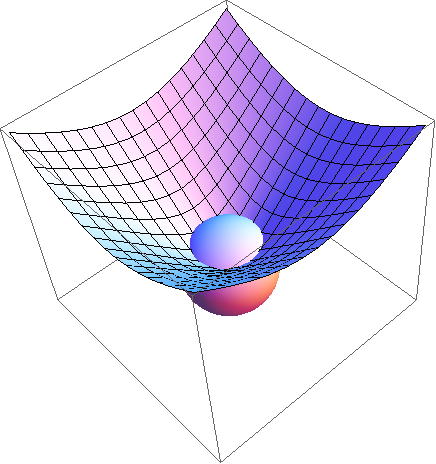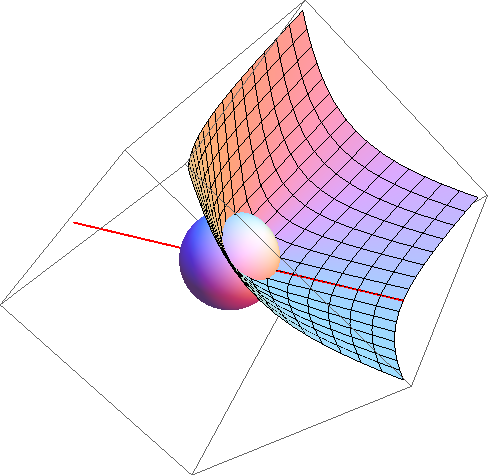answered
2014-07-23 19:01:28 -0600
I agree with Mr. Spiff, except for one thing. I believe that the integral should be:
$$ \int_0^{2\pi} \int_0^{\pi/4} \int_0^2 \rho^4 \sin(\varphi) \ d\rho \ d\varphi \ d\theta $$
Note the extra $ \sin(\varphi) $. I also have a more rigorous reasoning for the $\pi/4$ radian angle:
We know that $z = \sqrt{x^2 + y^2}$, which means that in cylindrical coordinates, $z = r$. By transforming $z$ and $r$ into their spherical form ($z = \rho \cos(\varphi), r = \rho \sin (\varphi) $), we obtain:
$$ \rho \cos(\varphi) = \rho \sin (\varphi) $$
Assuming that $ \rho > 0 $, we can divide by $\rho$ on both sides.
$$ \cos(\varphi) = \sin (\varphi) $$
If you can't tell what $\varphi$ is yet, it may be helpful to isolate it by dividing by $\cos(\varphi)$ and then taking the arctangent on both sides of the equation. It is easier to just watch the process than to explain:
$$ \frac{\cos(\varphi)}{\cos(\varphi)} = \frac{\sin (\varphi)}{\cos(\varphi)} $$
$$ 1 = \tan(\varphi) $$
$$ \varphi = \tan^{-1}(1) $$
Using the restriction $0 \leq \varphi \leq \pi$, we conclude that $\varphi = \frac{\pi}{4}$ a.k.a. $45^{\circ}$.


